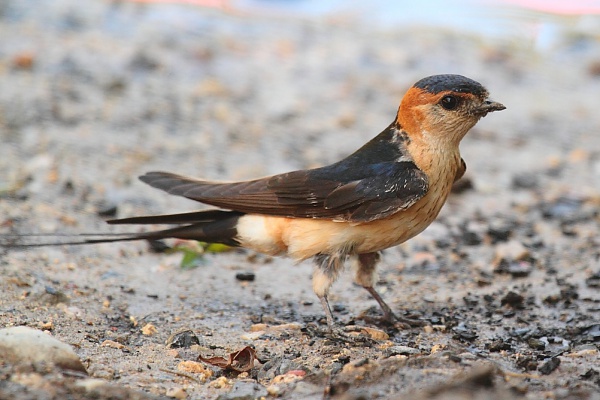Facts About Red-rumped swallow
The red-rumped swallow is an enchanting bird that inhabits the warmer regions of southern Europe and Asia. They can be seen from Portugal and Spain, extending to Japan, India, Sri Lanka, and even Africa. While populations in India and Africa are sedentary, those in Europe and Asia migrate to warmer regions such as Africa or India during winter to avoid the cold.
These swallows closely resemble other insectivorous birds. They have glossy blue plumage on their backs, muted underparts, and a distinctive pale or reddish patch on their rump. Their faces and neck collars also exhibit pale or reddish hues. Unlike some other swallows, they lack a chest band. Their tails are black, which adds to their streamlined appearance.
Red-rumped swallows are adept architects when it comes to nesting. They construct quarter-spherical nests with tunnel entrances from mud. Within these nests, they lay between three and six eggs.
Erik Laxmann first described the red-rumped swallow scientifically in 1769. Most scientists classify them in the genus Cecropis, though some still prefer the older classification of Hirundo. This bird is part of a broader group that includes Hirundo striolata, and there is considerable variation among the different populations. Some populations are so distinct that they are considered separate species, such as the Sri Lanka swallow.
During breeding season, these swallows inhabit southern Europe and Asia but migrate to sub-Saharan Africa or South Asia to escape the winter. Some swallows in Africa and parts of Asia are non-migratory. They are fond of flying over grasslands in pursuit of insects and are intelligent enough to follow grass fires or grazing cattle to catch insects stirred up by these activities.
Regarding nest construction, red-rumped swallows initially create open-cup nests, then progress to closed nests, and ultimately build intricate retort-shaped nests. Fortunately, these birds are not facing any severe threats and have a large, stable population. Consequently, they are classified as Least Concern by the IUCN. Interestingly, they have been gradually expanding their range northward in Europe, recently being spotted in new areas like France and Romania.

 Laos
Laos